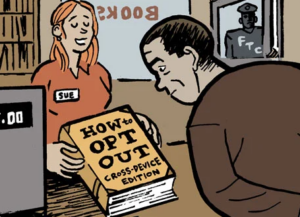 There are a lot of bidder tools in the market, so when Beeswax came out of beta last Thursday with a solution it calls “bidder-as-a-service” – with Foursquare as its flagship client – its focus was on customizability and price.
There are a lot of bidder tools in the market, so when Beeswax came out of beta last Thursday with a solution it calls “bidder-as-a-service” – with Foursquare as its flagship client – its focus was on customizability and price.
“With Beeswax we can write our own algorithm for bidding,” said Peter Krasniqi, Foursquare’s VP of global sales strategy. “That flexibility for our engineers is a real differentiator.”
When a publisher applies unique first-party data to juice the value of its inventory, the site may set up a PMP or join a co-op. But if Foursquare, which is evolving into a location-based ad network, wants to apply its data to media buying, it needs a more flexible way to do so than the established DSP market.
DSPs are good at ingesting and reporting data, Krasniqi said, but they don’t let Foursquare’s nascent ad network optimize against the bid stream or use its own secret sauce.
“If you’re cookied across digital as looking for cars, you’re quickly retargeted with a high CPM by car dealers,” he said. “If we catch someone on a Saturday afternoon going to a Ford dealership, we understand that in real time and should be able to charge a premium to advertisers based on that knowledge of the real world.”
Beeswax – which gears its tool to direct marketers and ad nets – also hopes to differentiate with its ability to pull better insights from the bid stream, at a price low enough to pull the rug out from under competitors.
While most custom bidder suppliers, DSPs and trade desks prefer to avoid discussions of their margins and prices, Beeswax CEO Ari Paparo is shouting his $7,500-per-month entry-level cost from every rooftop he can find.
“It’s freaking people out,” he said.
Indeed, Krasniqi said Foursquare mapped out the time and cost to build its own bidding solution and came up with a conservative total of more than $1 million over at least six months, plus the costs of ongoing maintenance.
At least Beeswax can relieve the burden of pricing anxieties from ad nets, which routinely face marketers trying to eliminate middlemen margins.
“Ad networks have seen a lot of change and are under pressure, especially those that rely on data that can be captured elsewhere,” said Paparo. “We think there’s a role for networks and the pressure on them is a positive thing when you think about differentiation.”
The self-service bidder model also partially explains why Beeswax isn’t eyeballing agencies and holding companies, where most ad tech companies compete for dollars and adoption, since those agencies don’t have the exchange-level tinkerers the product is made for.
“Our best customers are data scientists and engineers, and often agencies don’t have those things,” said Paparo, who added that ad networks shouldn’t be using the same DSPs agencies deploy at a time when they need to demonstrate unique value. “Regardless of how many APIs you offer, you can’t build something on someone else’s SaaS platform.”













